Mattawa
Dive into the fascinating French-Canadian history of Mattawa, Ontario, an important stop on the fur trade route since the time of New France. Our photo gallery offers as wonderful glimpse into its past.
Incorporated: 1883
District: Nipissing
Population (2016): 1,993
Demonym: Mattawanian
Mattawa is a bilingual town in northeastern Ontario, just across the river from the province of Québec. It sits on traditional Algonquin Nation territory – if fact, Mattawa’s name means “Meeting of the Waters” in the Algonquin language. The town is located at the confluence of the Ottawa and Mattawa rivers, and is the oldest settlement in the Nipissing District. A geographic hub, Mattawa has an extensive network of historic canoe and portage trails, as well as roads and railroads.
Illustration of the village of Mattawa, 1881
The first Europeans to set foot on Mattawa soil were Étienne Brûlé in 1610 and Samuel de Champlain in 1615. Brûlé was only 18 when he camped along its shores, and Champlain spent a few days there while he repaired his canoe. Mattawa’s geographic position was of strategic importance to the Europeans – it was along the water route that coureurs des bois and voyageurs would take from Montréal to the western frontier (Lake Superior country) to collect furs. It was said that canoes travelling west up the Ottawa river turned left at “the Forks” (the mouth of the Mattawa) to enter the “Petite Rivière”, before making their way to Lake Nipissing.
Circa 1900 painting titled "La Vérendrye at the Lake of the Woods"
1956 painting titled "Etienne Brûlé at the Mouth of the Humber"
Several other historic figures passed through the area, such as Jean Nicolet in 1620, Pierre-Esprit Radisson and Médard des Groseilliers in 1658, La Verendrye in 1731, Alexander MacKenzie in 1794 and David Thompson in 1812. Today, there are many statues around the town commemorating these explorers. The Mattawa Museum also features a large statue of Big Joe Mufferaw, a local folk hero.
Though the Mattawa area was on traditional Algonquin land for some time, there was no permanent Algonquin settlement there until the 19th century. According to local writer and historian Doug Mackey, two Algonquin groups under Antoine Kiwiwisens and Amable du Fond headed this settlement, an ideal base near the hunting territories to the northwest and southwest of the Mattawa River. La Fond built a log home that remains one of the town’s oldest buildings.
Big Joe Mufferaw
“Joe Mufferaw” was the anglicized name of Joseph Montferrand (1802-1864), a local lumberjack, athlete and folk hero. Many stories and tall tales about him exist, and it can be tricky separating fact from fiction. Big Joe achieved his legendary status when 3 books were published about his adventures starting in 1979. Adding to his fame was a song from Stompin’ Tom Connors, which included the line “Big Joe Mufferaw paddled into Mattawa, all the way from Ottawa in just one day”. Some claim Big Joe was also a defender of oppressed French-Canadian loggers. One story recounts that Joe was in a Montreal bar when he overheard a British army major insulting French Canadians. The major took a beating from Mufferaw, after which Joe supposedly yelled out “Any more insults for the Canadians?”
The Hudson’s Bay Company (HBC), a fur trading business for most of its 350-year history, has a long history in Mattawa and surrounding areas. John Siveright, commander of the HBC post in Fort Coulonge (about 200 km downriver from Mattawa), sent fur traders to the Mattawa area starting in the 1820s. In 1821, the HBC and its main competitor the North West Company (NWC), merged. HBC established a permanent post in Mattawa in 1837, and it eventually became the fur trading headquarters of the Nipissing district. HBC Archives record the following men employed at Mattawa in the early years: Charles Lepage (interpreter in 1837), Donald Grant (labourer 1840-1844), James Stewart Watt (apprentice clerk in 1845), John Wedderburn Simpson (winter transport clerk in 1846), and Colin Rankin (postmaster 1848-1854).
A group of employees from both HBC and NWC who retired in the late 1830s and early 1840s from the Timiskaming district made their way to Mattawa and settled there permanently. This group of both white and indigenous families included names such as Bastien, Colton, Crawford, England, Ferris, McCracken, McDonnell, McKay, McKenzie and Turner. The men brought their families over, and those who were single married women from the area, many of them indigenous.
These families earned a living through the fur trade and seasonal labour, which included farming in the summer and lumbering in the winter. In the late 19th century, Mattawa became known as a mecca for big-game hunting, which presented further economic opportunities in the form of guiding. Once the fur trade started to wane and the lumber industry expanded, the HBC post became a general store, frequented mostly by local lumbermen. It closed permanently in the early 20th century.
Religion in Mattawa
Historical records show that the first religious ceremonies took place at the Mission of Mattawang as early as 1836. There was no resident priest at that time but travelling missionary priests would come through the area to officiate baptisms, marriages and burials. The first Catholic church, St. Anne’s, was erected in 1863, and a more modern stone church replaced it in 1889 (pictured on the left).
In 1872, St. Andrew’s United Church was built, and in 1873, a Methodist church was also constructed.
By the 1860s, the Mattawa area had already been a hub for the logging industry for decades. White pines were cut down and floated down the Mattawa river to sawmills – fulfilling Britain’s need for shipbuilding timber.
In 1878, the first hospital was built on Timmins Street. It only had 5 beds and also served as a chapel. It was initially staffed by 3 nuns, who also made regular trips to the lumber workers’ shanties to care for sick lumberjacks. In the summer, trails were rough, marshy and plagued by mosquitoes and heat. The nuns would travel by canoe and on foot and slept in the forest. In the winter, they used showshoes (and still had to sleep in the forest).
In 1881, a railway line was extended to Mattawa, provided a boost to population numbers and reduced industry dependence on the river. The railway was built mostly by French-Canadians, which explains why so many migrated to the area at that time. After construction was completed, many of these labourers decided to stay in Mattawa and either brought their families over from Québec or started new families there. Their settlement is the reason why French-Canadian culture is still present in the town today. That same year, the Mattawa House Hotel was opened for business. It still operates today, under the name Voyageur Inn.
In 1884, 165 families lived in Mattawa. By 1892, the population had reached 1,780. The first Town Hall & Fire Hall was built in 1885 on present-day Main Street but burned down in 1949. Electricity first came to Mattawa in 1894. A year later, there were 5 additional hotels operating in Mattawa to house all of the lumber workers.
Important Dates in Recent History:
1910: the first car is driven along Main Street by Albert Gauvreau
1945: the first high school was built in Mattawa
1952: the Otto Holden Generating Station was established just outside of Mattawa
1957: highway 533 links Mattawa to other highways
1972: the newspaper The Mattawa Recorder starts its publication
Did you know that Mattawa elected Canada's first-ever Black mayor, Dr. Firmin Monestime, in 1963? Monestime served as mayor until his death in 1977. Click here to learn more about Dr. Monestime.
Visitors to Mattawa today will likely notice other landmarks of historical significance: the three crosses. Visible from town, they are located on Quebec Hill, east of the Ottawa River. They were said to be erected in 1686 on the order of the Sieur de Troyes in order to make it easier for the voyageurs to locate the entrance to the Mattawa River. Over the years, the crosses have been repaired and replaced as necessary.
The town hosts an annual Mattawa Voyageur Days Festival, which takes place the last weekend of July. The festival features lumberjack competitions, canoe races, live musical entertainment and a fireworks show.
Statistics Based on the Last Census (2016)
Land area: 3.66 km2
Population: 1,993
53% female, 47% male
Median age of population: 51.7
Average size of census family: 2.6
French as a mother tongue: 31.6%
English as a mother tongue: 65.0%
Want to know more about what life was like in the lumber and railway years of Mattawa as a French-Canadian? Check out Benoît Cazabon’s book “Mattawa. À contre-courant” (in French). Disclaimer: as an Amazon Associate I earn from qualifying purchases.
Mattawa Photo Gallery
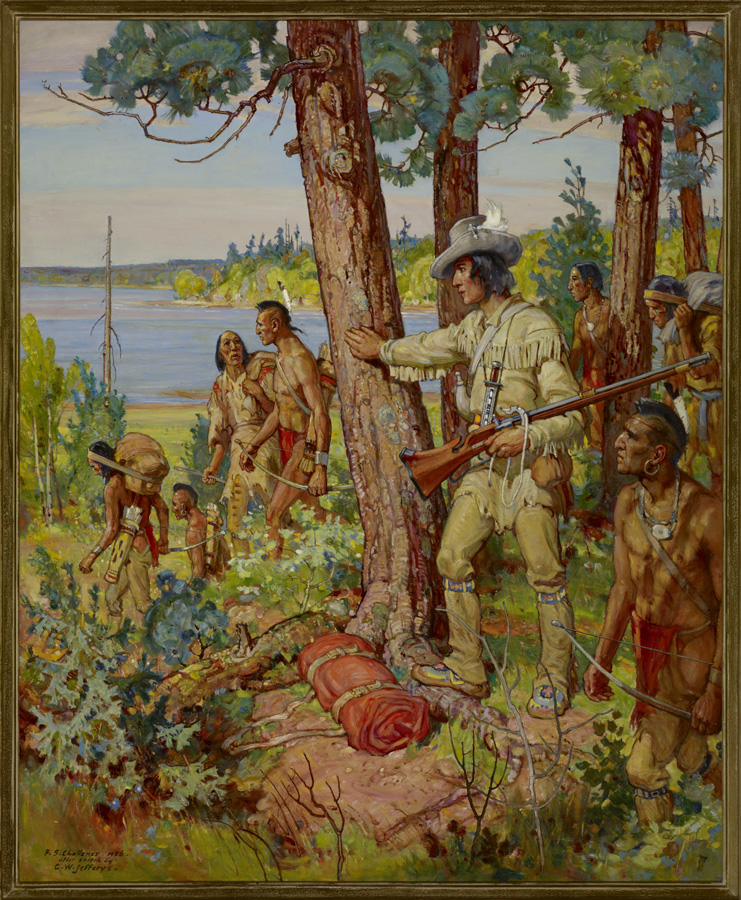
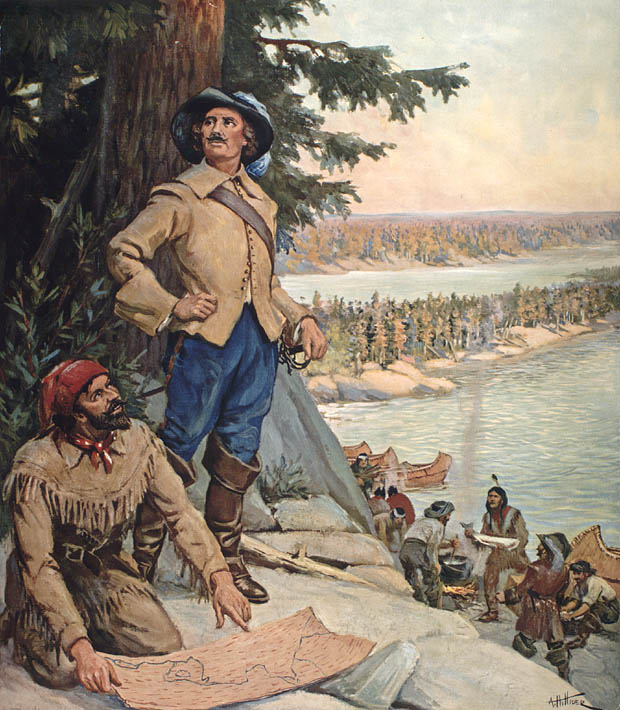
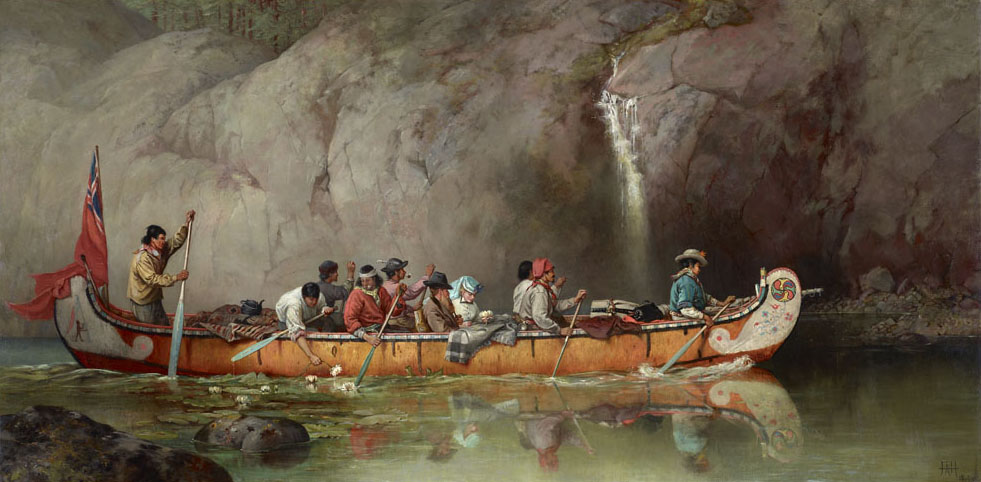
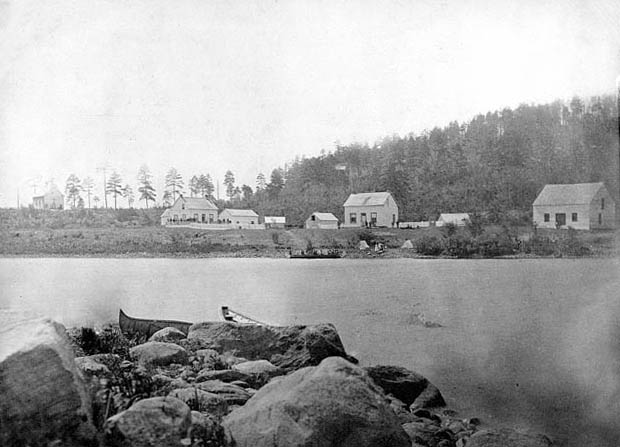

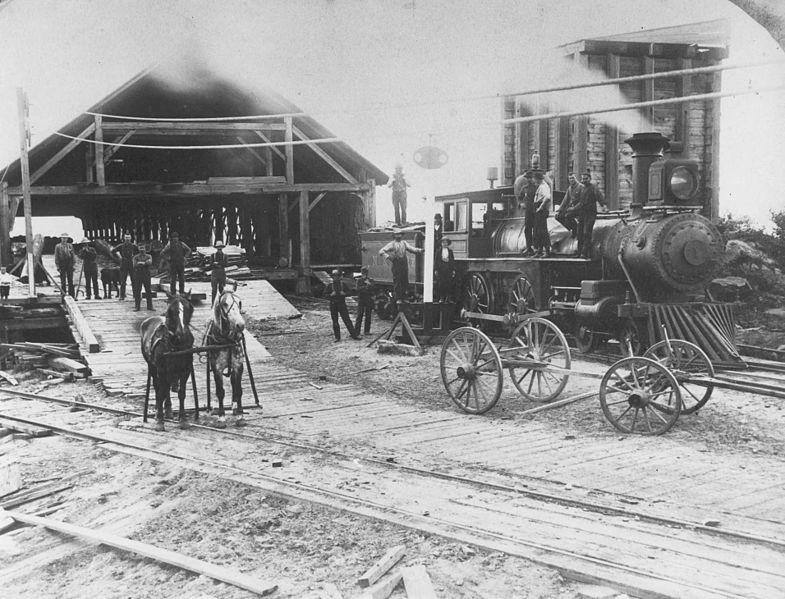
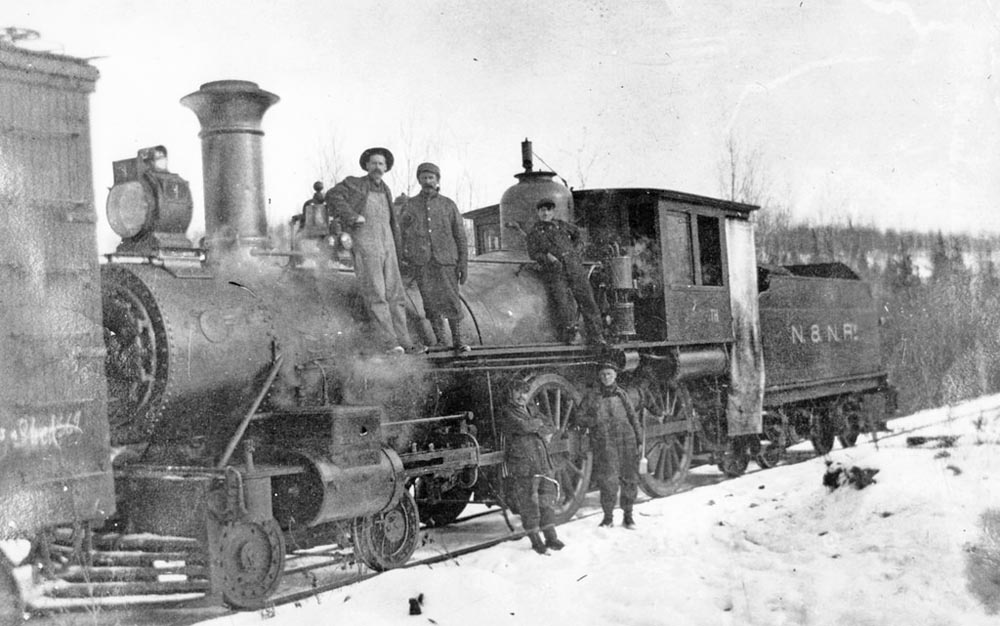
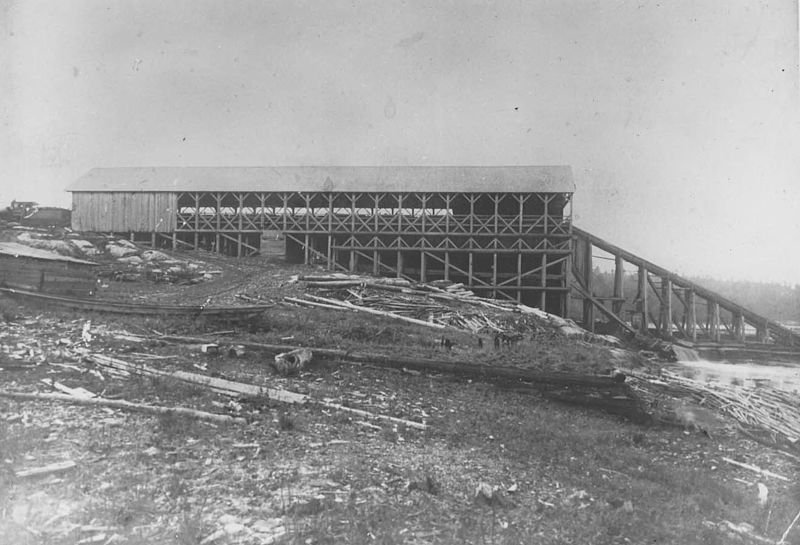
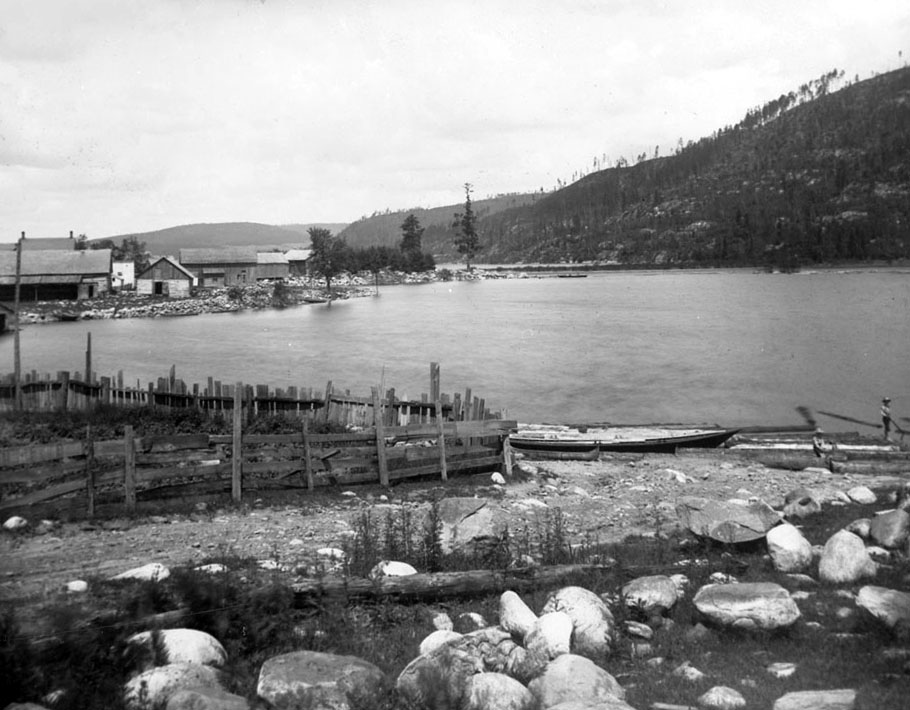
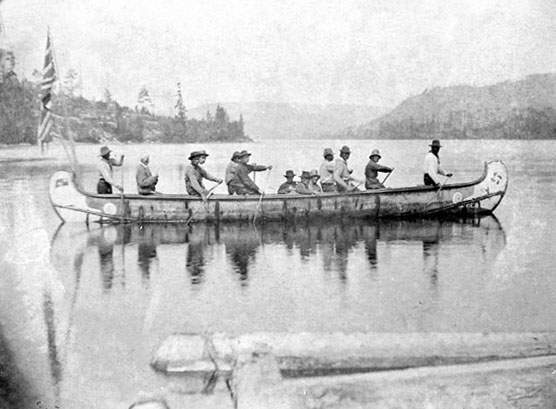
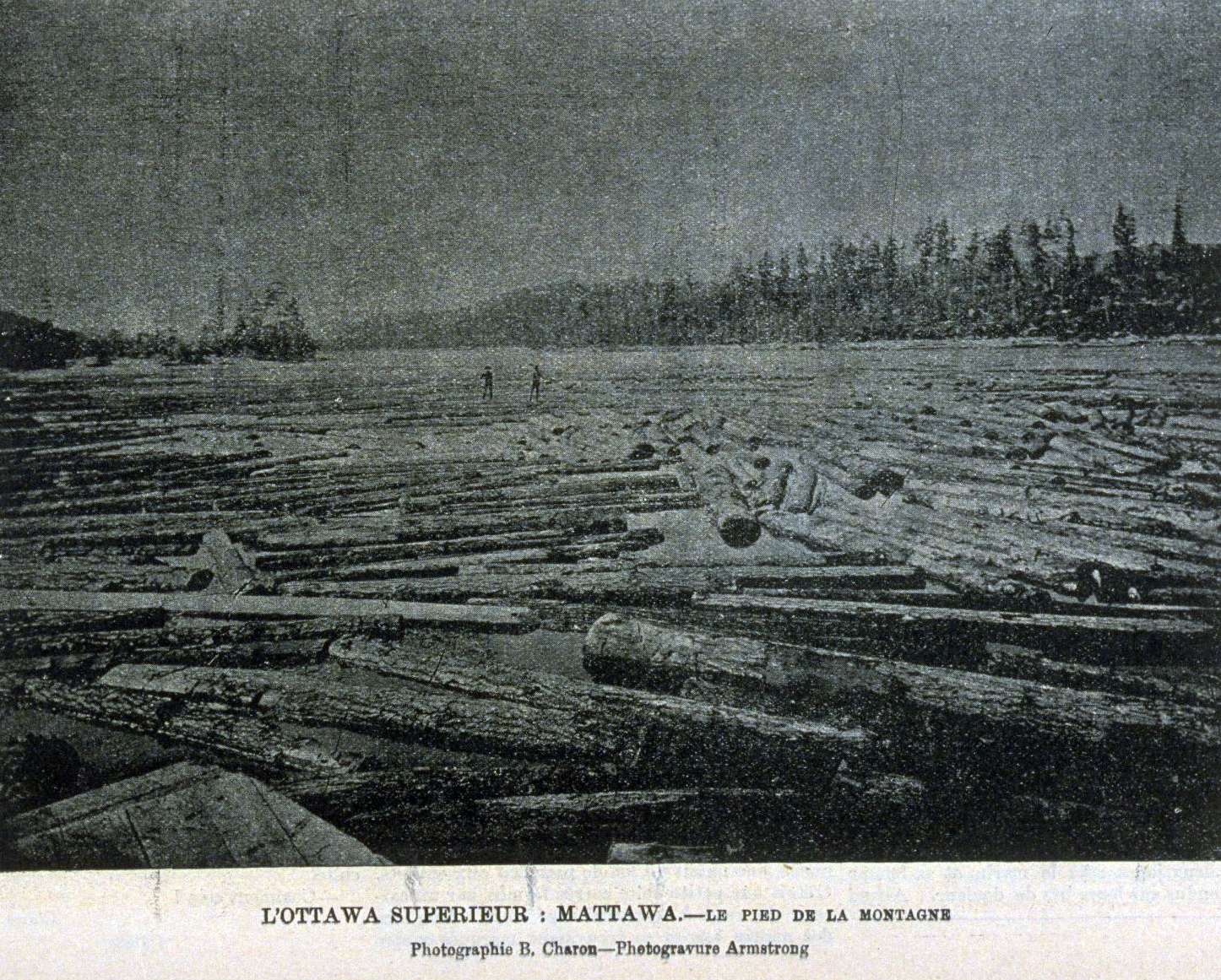
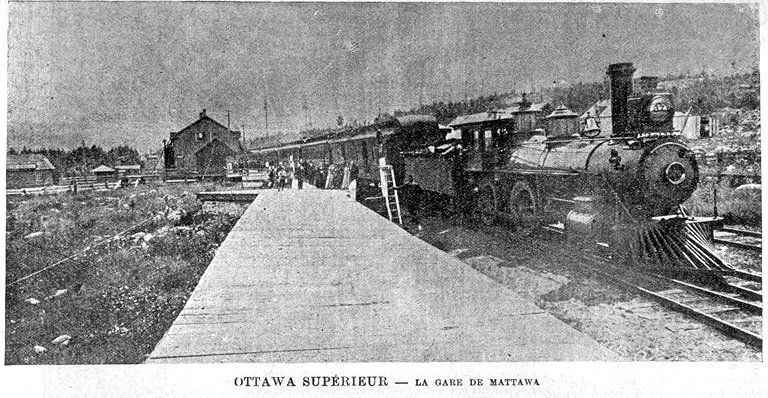
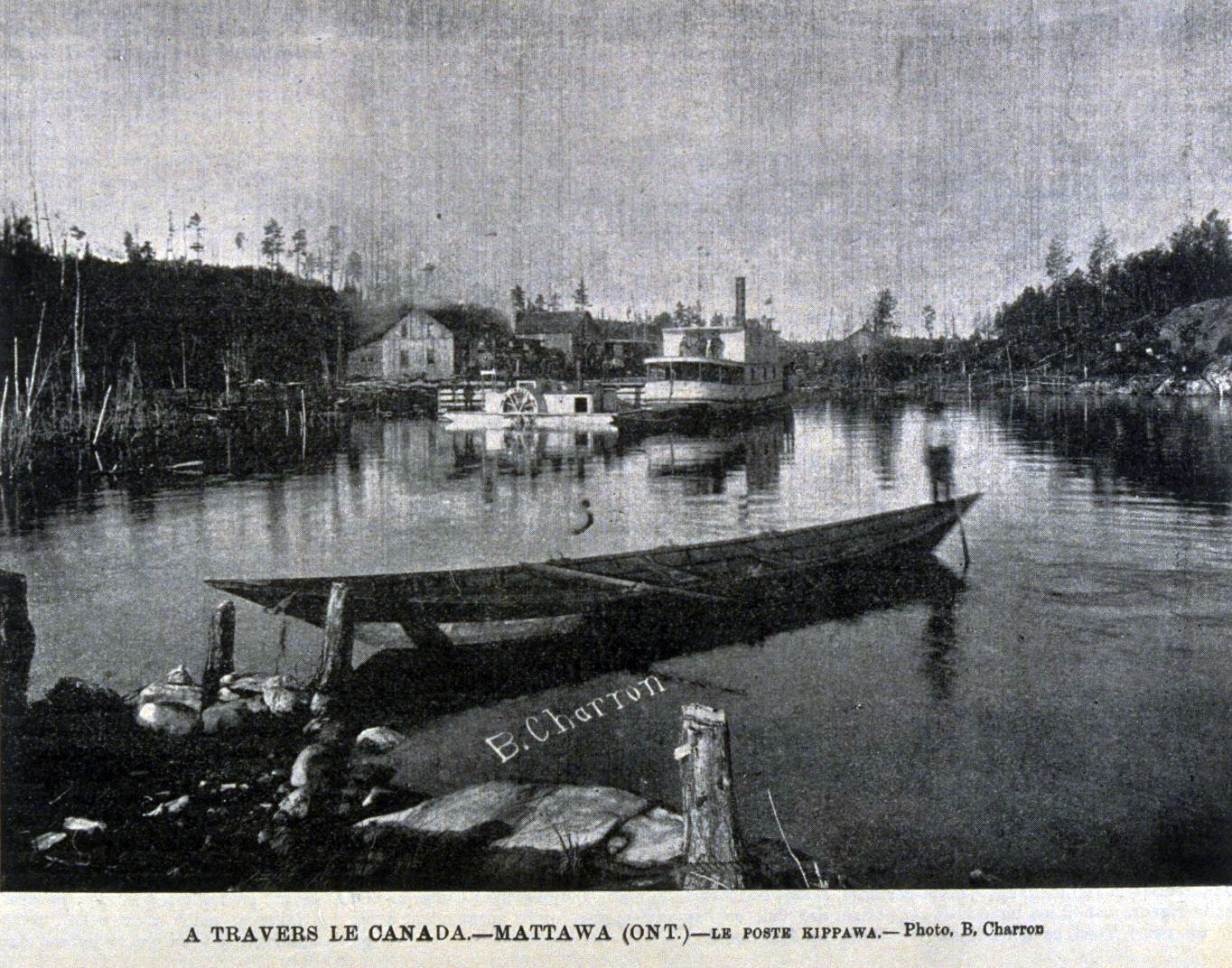
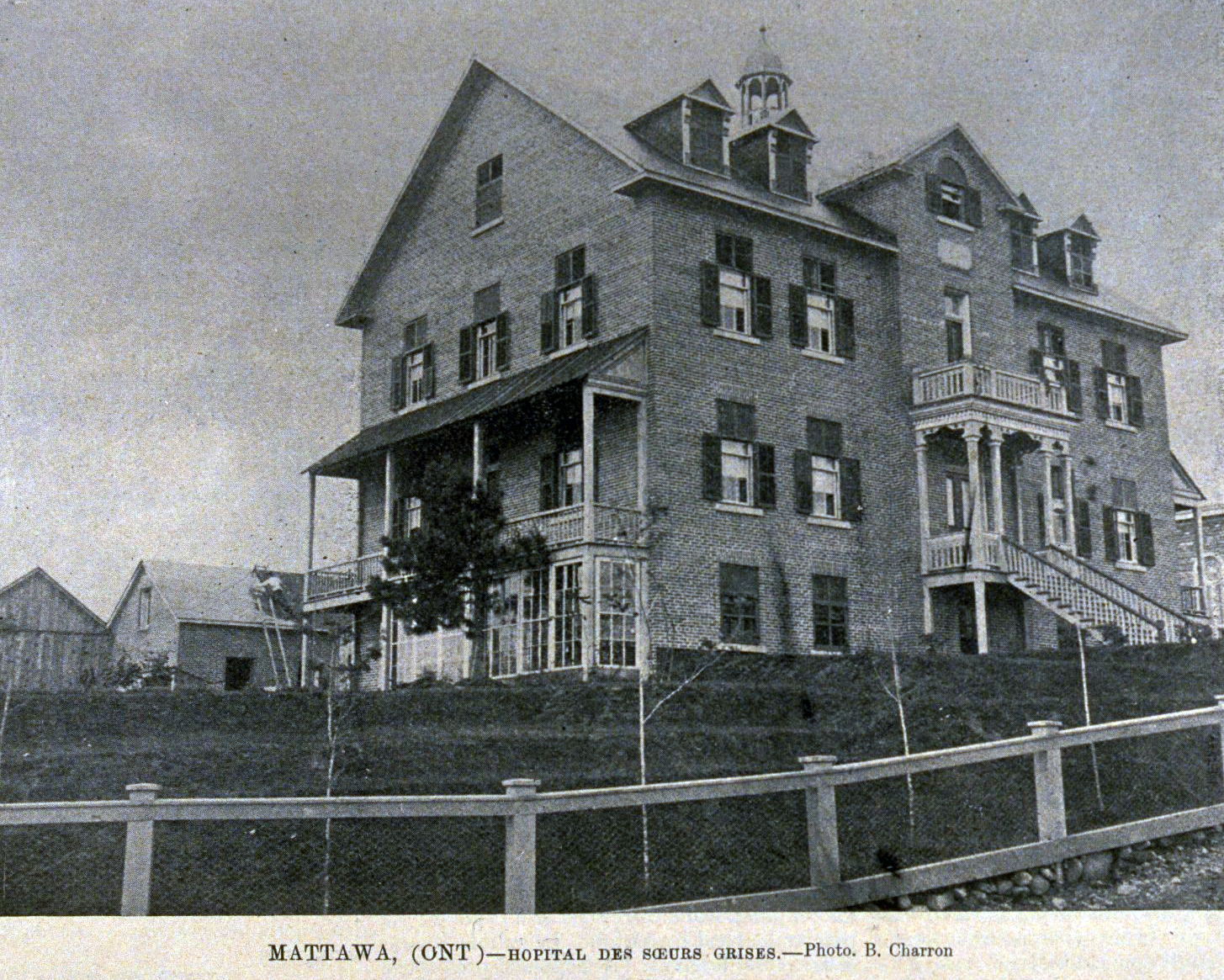
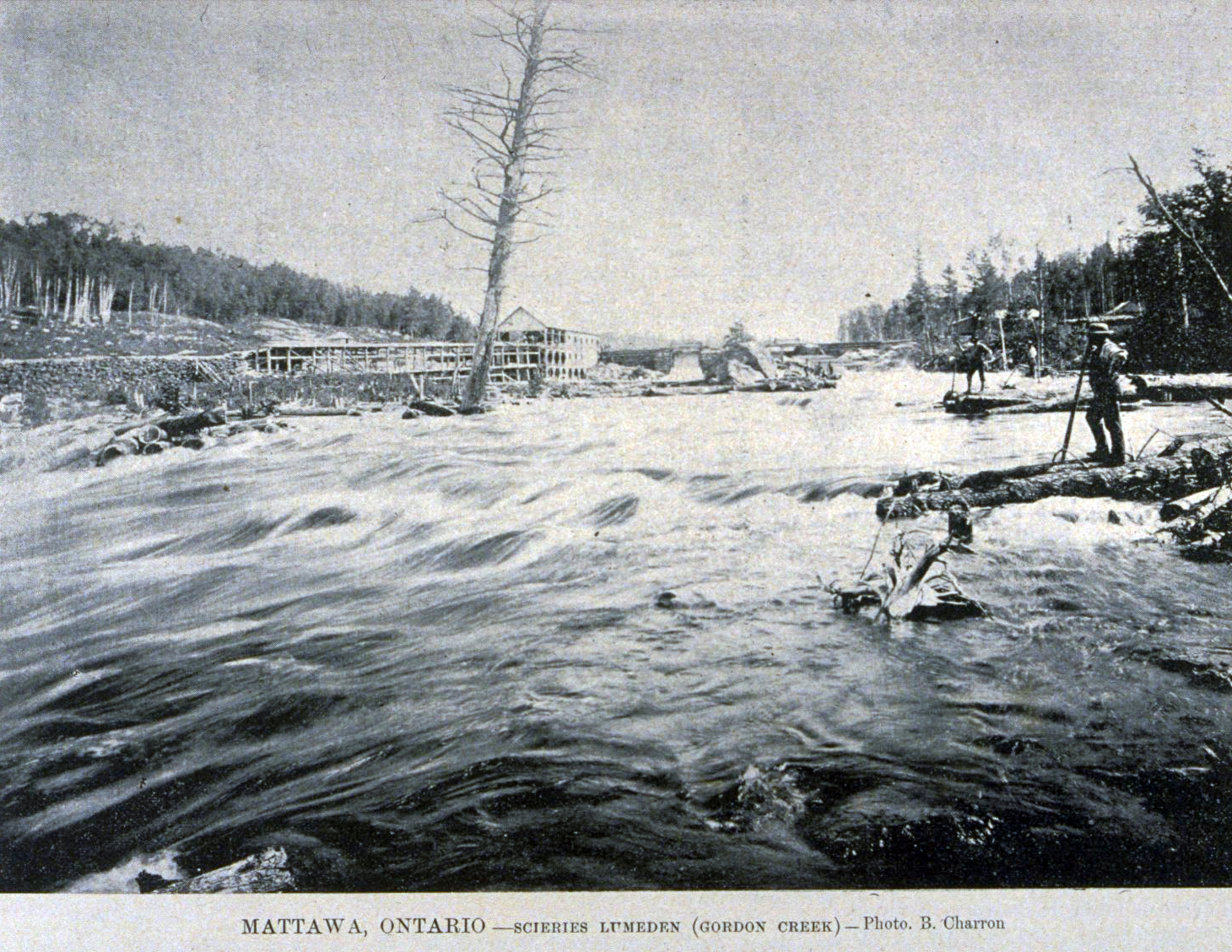
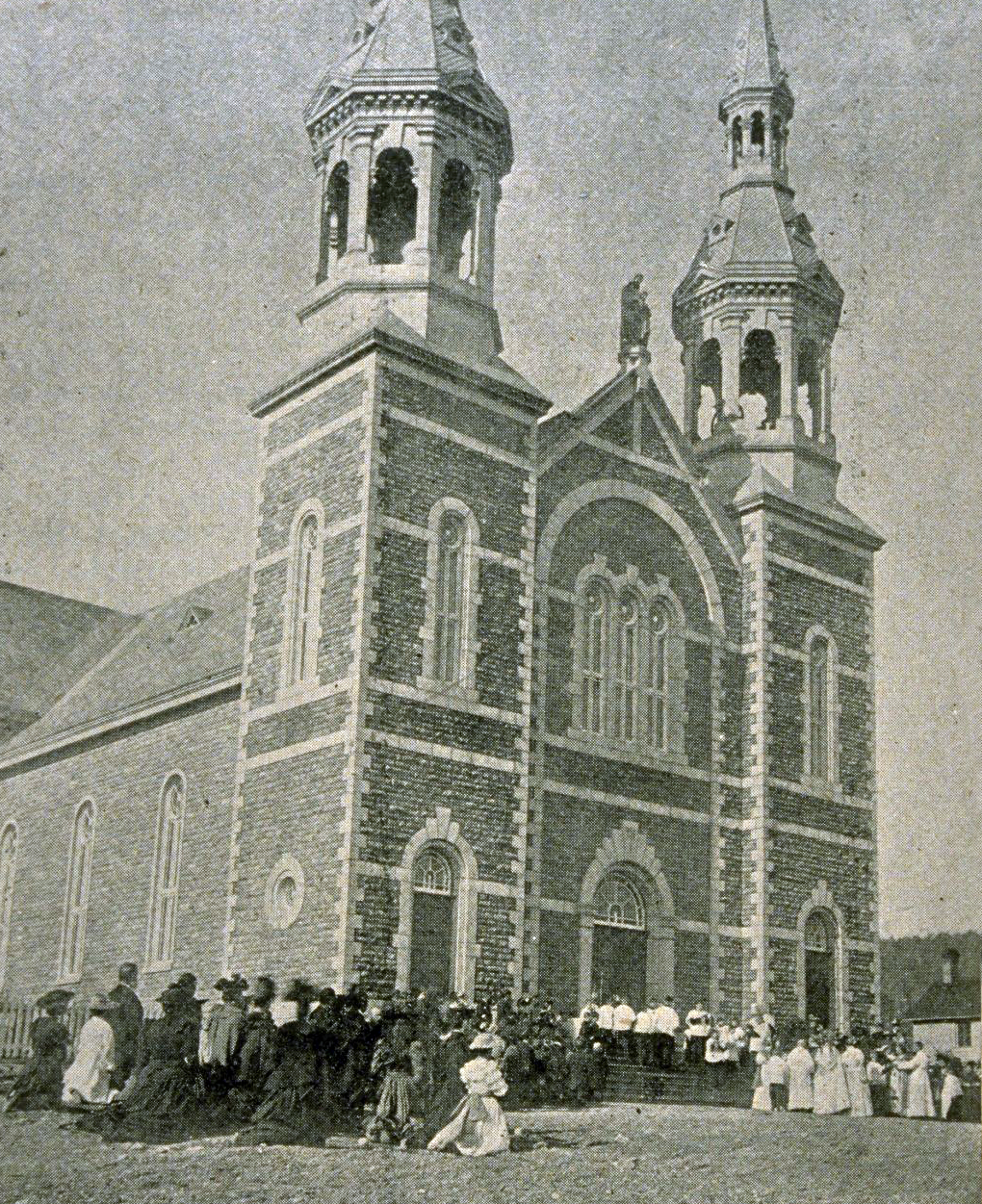
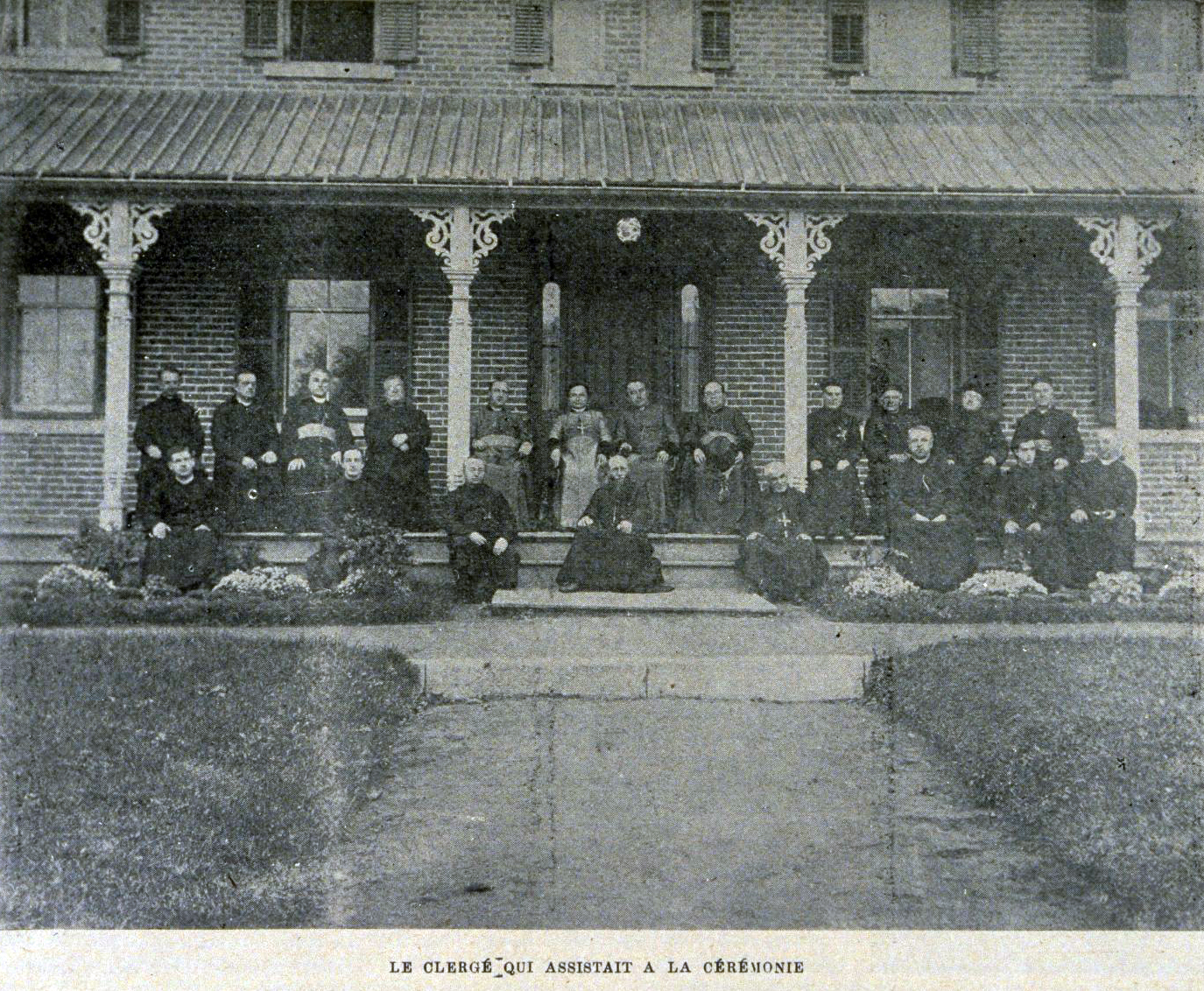
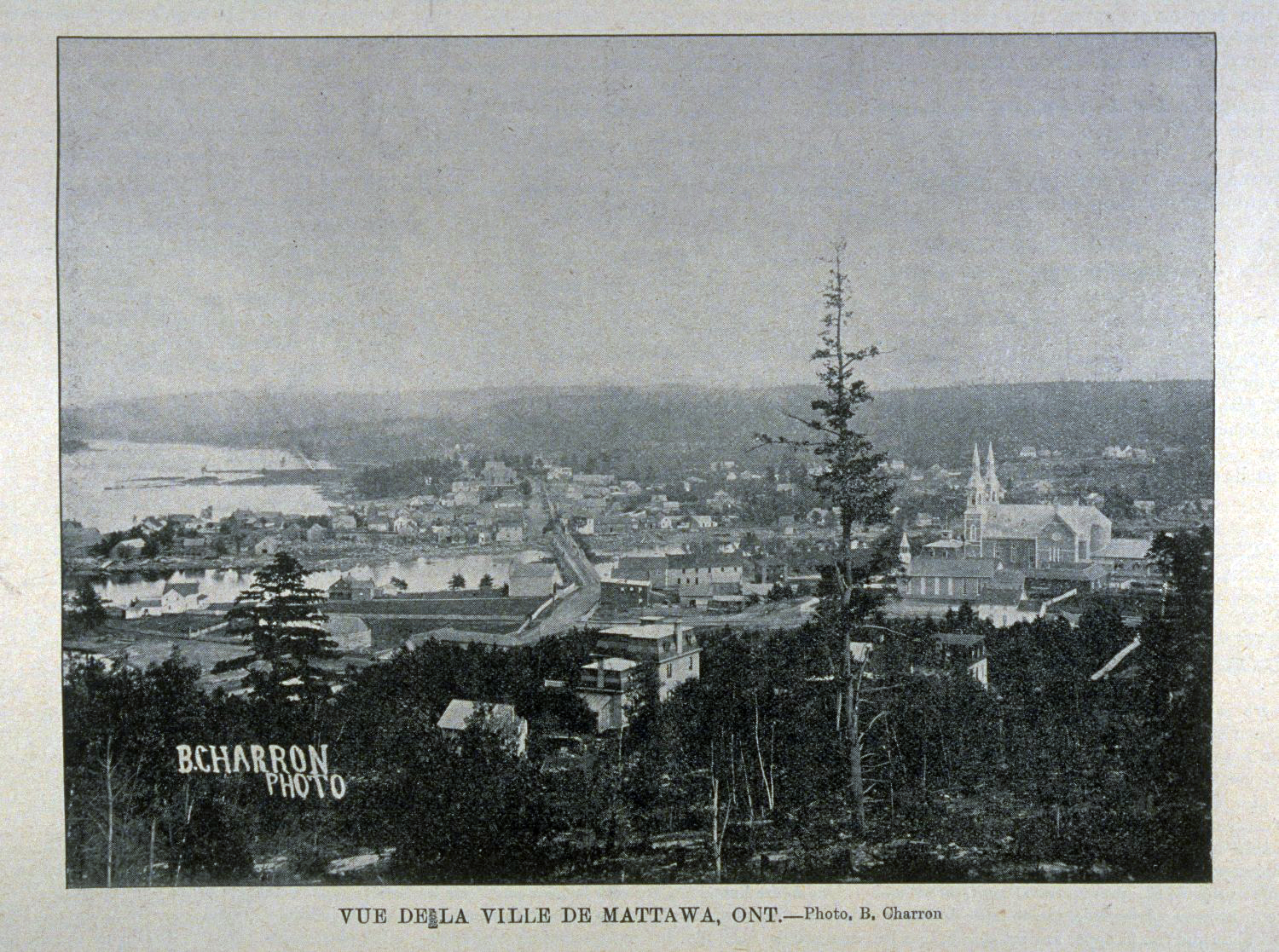
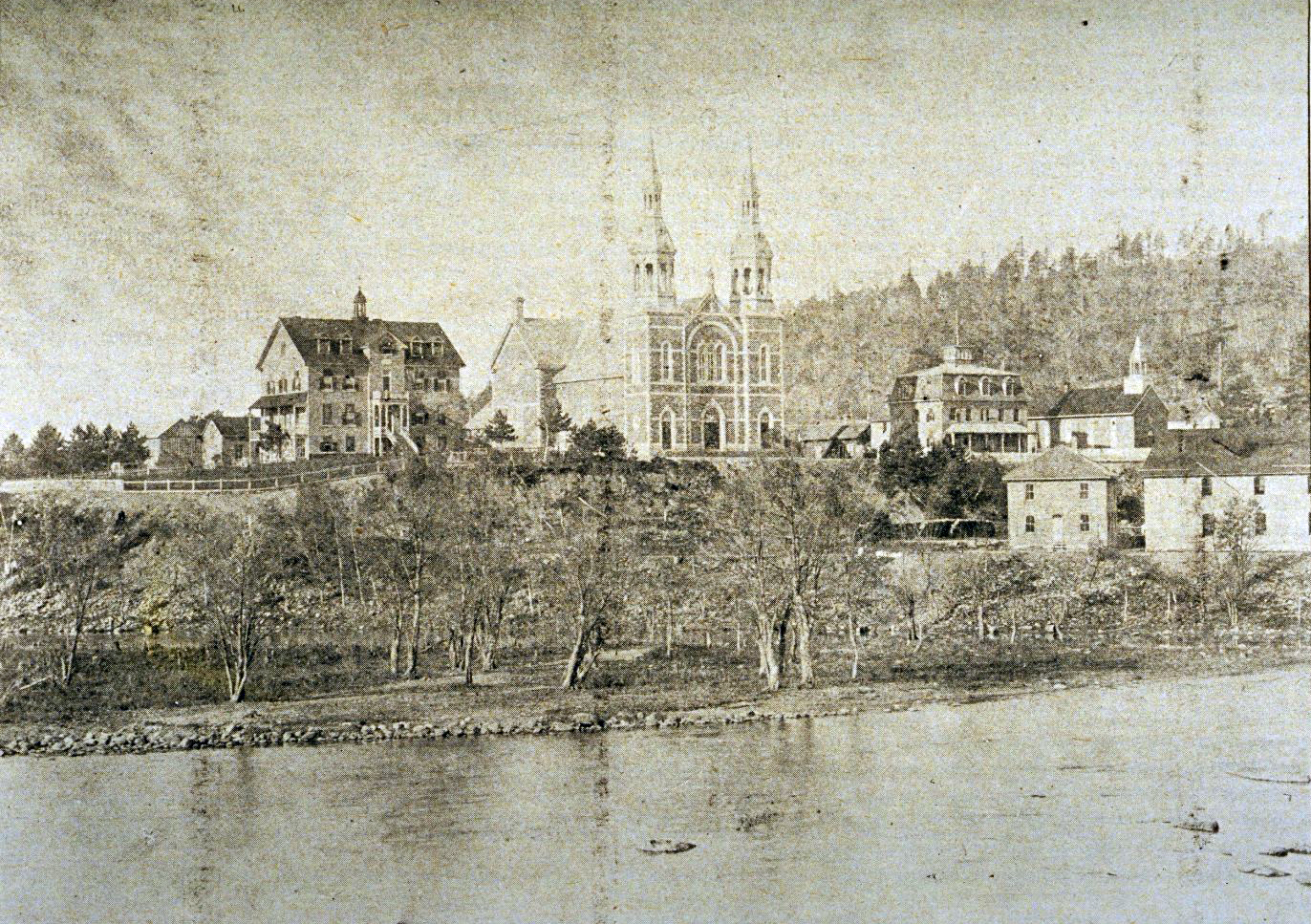
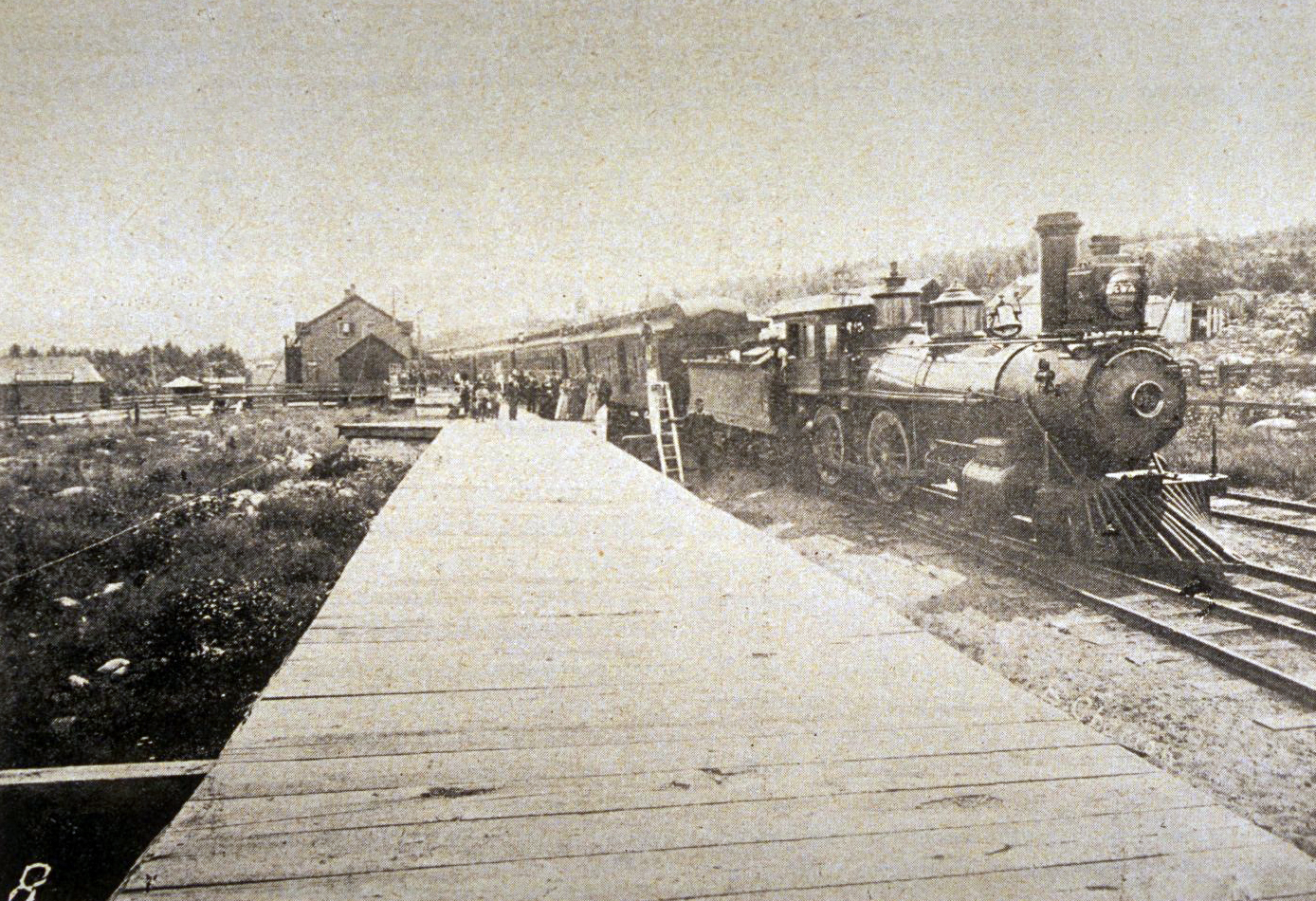
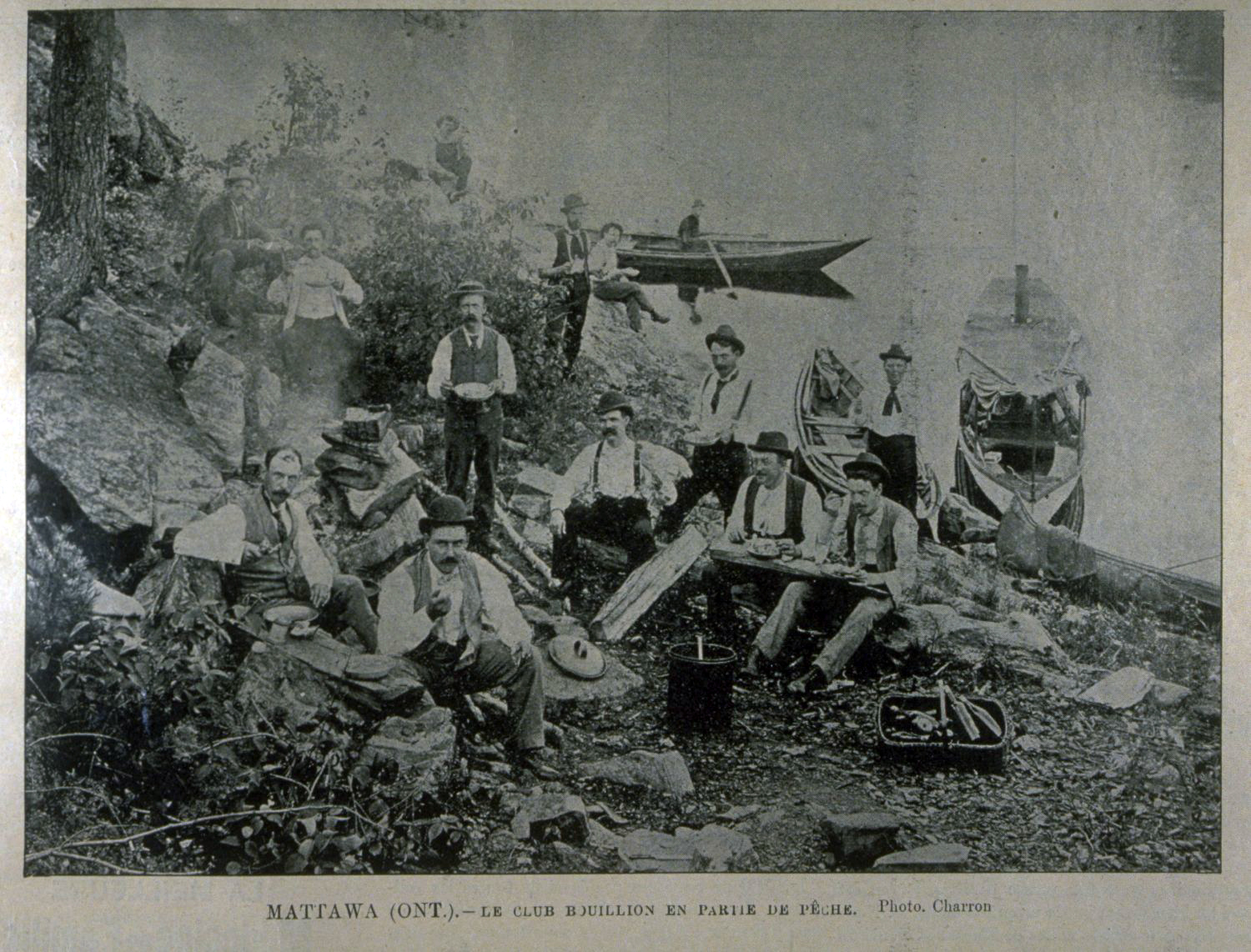
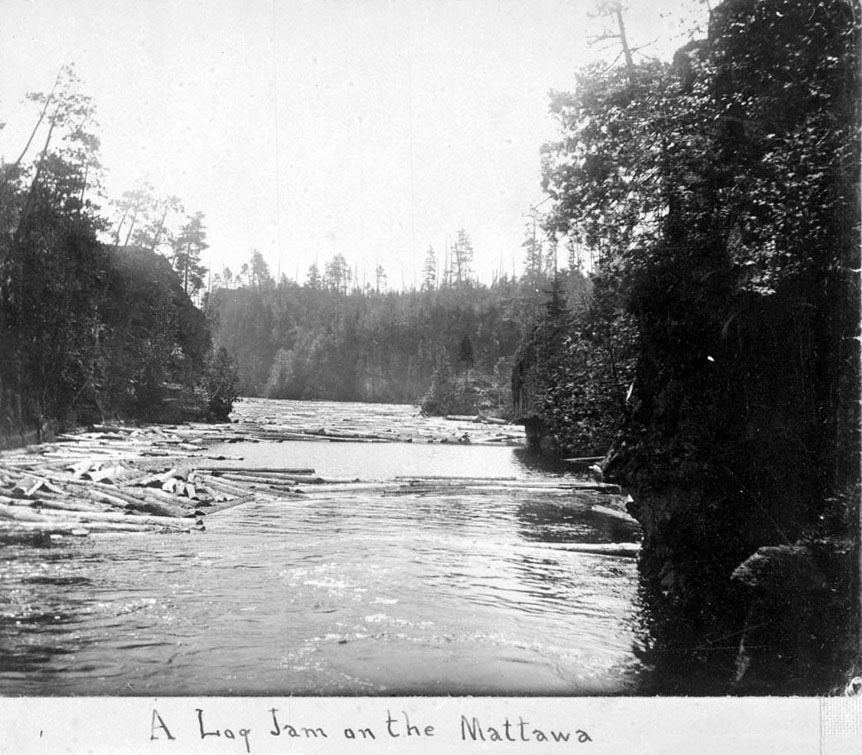
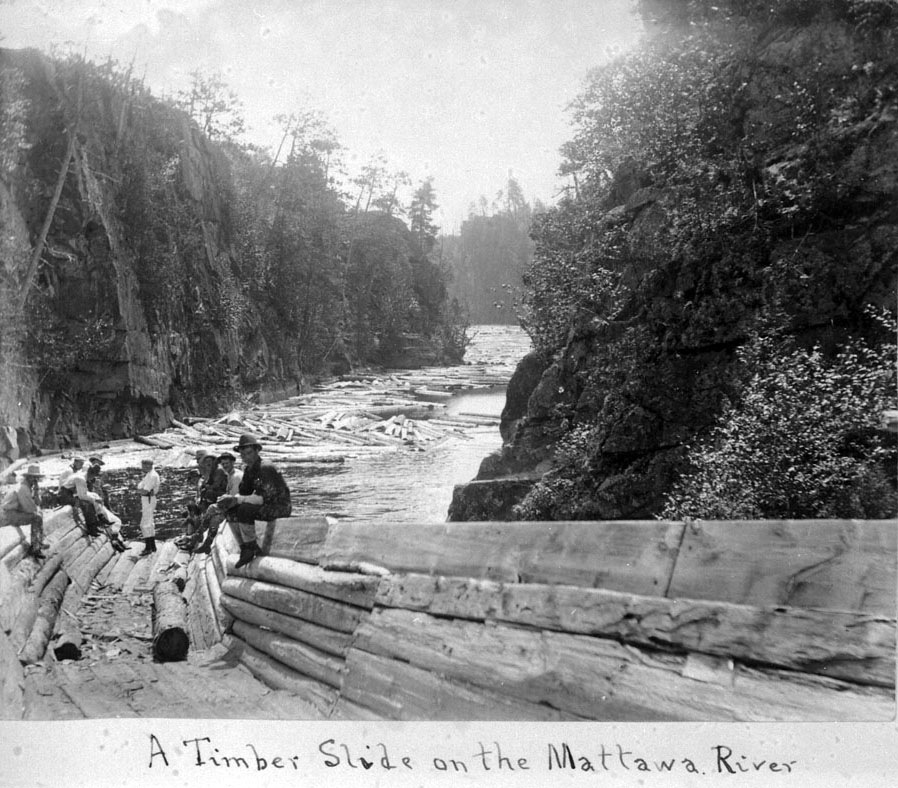

![The Berthiaume Family, 191[?]](https://images.squarespace-cdn.com/content/v1/5bb6661d8dfc8c1836526d3a/1550795851879-6FQ0F2S2DSYNMKHLIJ3T/191%3F+Berthiaume+Family.jpg)
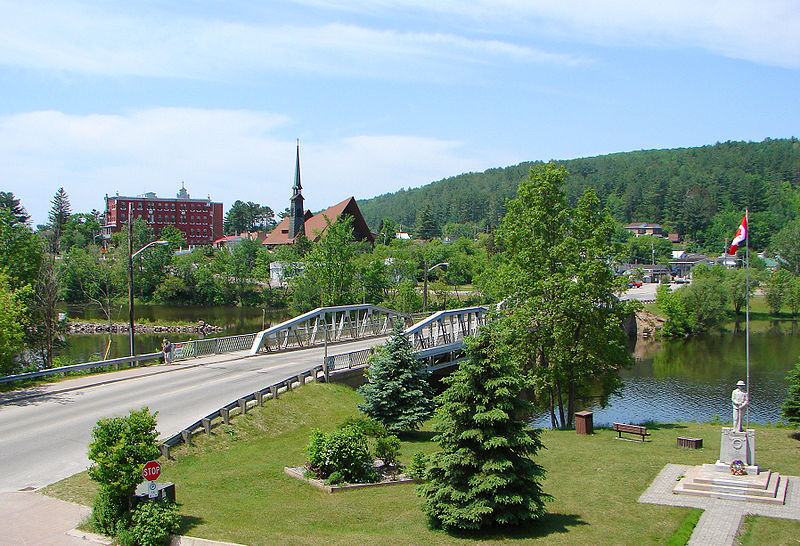
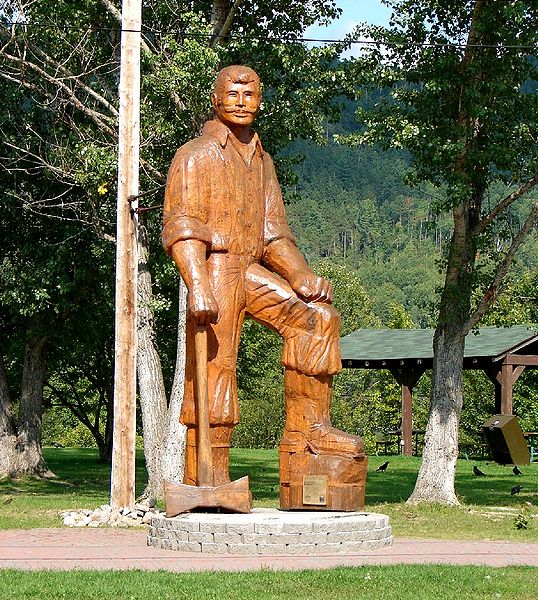
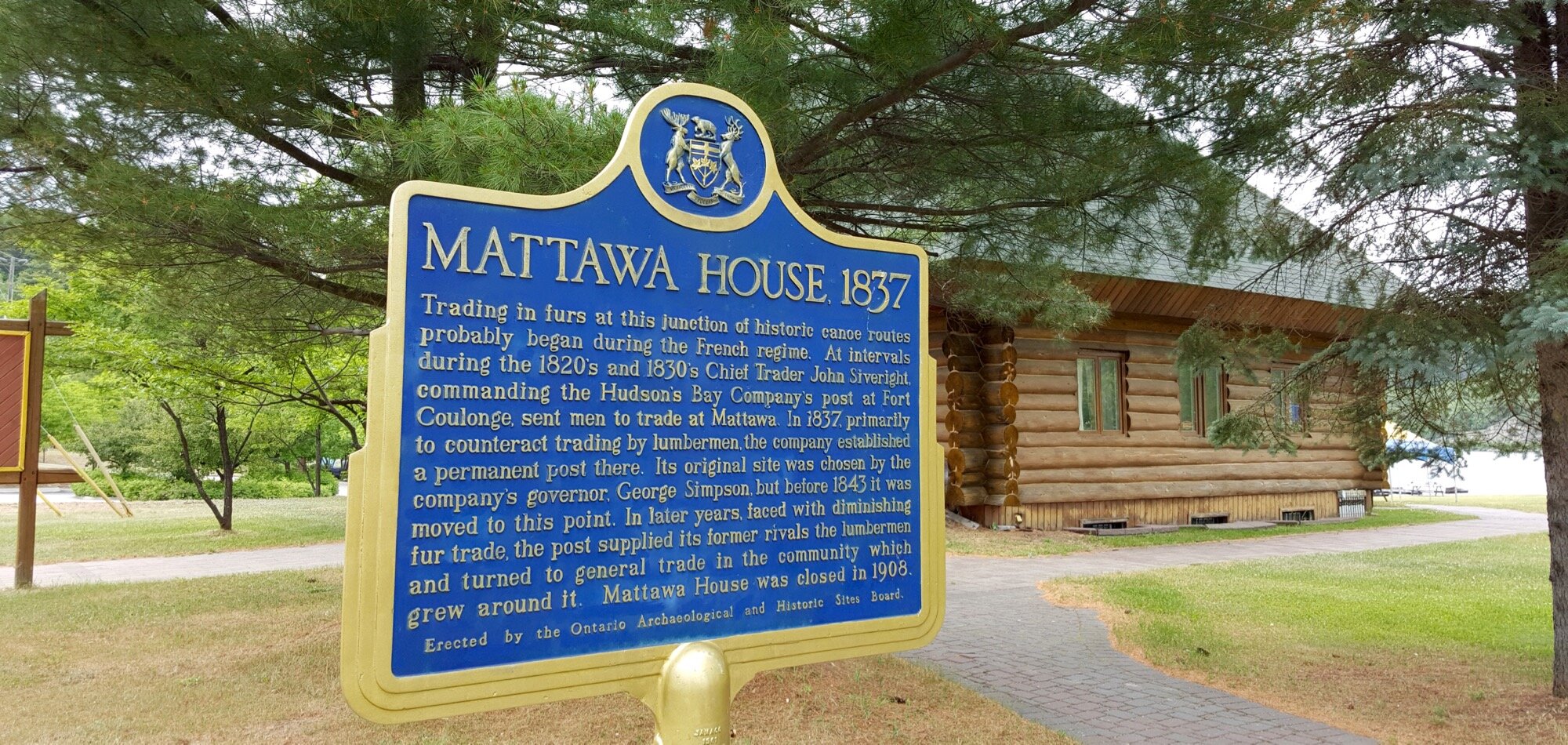
Want to start researching your own family roots? Contact us today!
Enjoying our articles and resources? Consider showing your support by making a donation. Every contribution, no matter how small, helps us pay for website hosting and allows us to create more content relating to French-Canadian genealogy and history. Thank you!
Sources:
Statistics Canada. 2017. Mattawa, T [Census subdivision], Ontario and Canada [Country] (table). Census Profile. 2016 Census. Statistics Canada Catalogue no. 98-316-X2016001. Ottawa. Released November 29, 2017 (https://www12.statcan.gc.ca/census-recensement/2016/dp-pd/prof/index.cfm?Lang=E).
“Our History”, Mattawa/North Bay Algonquin First Nation (https://www.mattawanorthbayalgonquinfirstnation.com/AboutUs.html).
“What about Mattawa?”, Town of Mattawa website (https://mattawa.ca/about-mattawa/)
“History…”, Mattawa Voyageur Days website (https://www.voyageurdays.com/history.htm)
Doug Mackey, “Canada’s Mythical Mufferaw is a real part of Mattawa”, 21 Sep 2001 online article, Past Forward Heritage Limited (http://www.pastforward.ca/perspectives/Sept_212001.htm)
“Our Heritage”, Hôpital de Mattawa Hospital (https://www.mattawahealth.ca/Mattawa-Hospital/Heritage)
“Hudson’s Bay Company Archives - Biographical Sheets”, Hudson’s Bay Company Archives, Government of Manitoba (https://www.gov.mb.ca/chc/archives/hbca/biographical/index.html).
Stone Circle Consulting and Know History, “Mattawa Nipissing Métis Historical Research Project: Final Synthesis Report”, 2015, Métis Nation (http://www.metisnation.org/).
Doug Mackey, “Mattawa’s Roots Buried in History”, 2 Jun 2000, Heritage Perspectives (https://pastforward.ca/perspectives/june22000.htm).
Image Credits:
"Etienne Brûlé at the Mouth of the Humber", digital image of an 1956 oil painting by Frederick Sproston Challener, Government of Ontario Art Collection Database, accession #619849 (http://www.archives.gov.on.ca : accessed 21 Feb 2019)
"La Vérendrye at the Lake of the Woods", digital image of a c. 1900 painting by Arthur H. Hider, Library and Archives Canada, MIKAN No 2895946 (http://collectionscanada.gc.ca accessed 21 Feb 2019).
"Canoe Manned by Voyageurs Passing a Waterfall", digital image of an 1869 oil painting by Frances Ann Hopkins, Library and Archives Canada, MIKAN No 2894475 (http://collectionscanada.gc.ca : accessed 21 Feb 2019).
“Fort Mattawa”, digital image of an 1876 photo by George McLaughlin, Library and Archives Canada, MIKAN No 3228124 (http://collectionscanada.gc.ca accessed 21 Feb 2019).
“Vue sur le village de Mattawan”, digital image of an 1881 illustration (unknown artist), Bibliothèque et Archives nationales du Québec, BAnQ numérique (http://collections.banq.qc.ca/ark:/52327/2069831), originally appearing in L’Opinion publique, Vol. 13, no 44 (2 Nov 1882), p. 526.
“Western end of the Nosbonsing and Nipissing Railway”, digital image of a circa 1884 photo (unknown photographer), Wikipedia Commons (https://commons.wikimedia.org/wiki/File:Western_end_of_the_Nosbonsing_and_Nipissing_Railway.jpg : accessed 21 Feb 2019). Addition details: This image shows the western terminus of the Nosbonsing and Nipissing Railway at Callander Bay on Lake Nipissing. The N&N was a short line lumber portage in central Ontario, Canada, connecting Lake Nipissing to Lake Nosbonsing, where logs could then be floated on the Mattawa River to Ottawa. The line was abandoned in 1912, but the charter was reused for an entirely different line formerly known as the Egan Estates Railway, some distance to the southeast. The engine is the "J.R. Booth", named for the line's owner, and was later used on the Ottawa, Arnprior and Parry Sound Railway (OA&PS), also owned by Booth.
“Nosbonsing and Nipissing Railway engine "JR Booth", digital image of a circa 1884 photo (unknown photographer), Wikipedia Commons (https://commons.wikimedia.org/wiki/File:Nosbonsing_and_Nipissing_Railway_engine_%22JR_Booth%22.jpg : accessed 21 Feb 2019). Addition details: The JR Booth was the only engine to work the Nosbonsing and Nipissing Railway, a 5.5 mile long portage railway in central Ontario. The railway carried logs from Lake Nipissing to Lake Nobonsing, where they could reach the Mattawa River, and ultimately Booth's mill in Ottawa. National Archives Photo PA213288.
“Log lift on the Nosbonsing and Nipissing Railway”, digital image of a circa 1884 photo (unknown photographer), Wikipedia Commons (https://commons.wikimedia.org/wiki/File:Log_lift_on_the_Nosbonsing_and_Nipissing_Railway.jpg : accessed 21 Feb 2019). Addition details: This jack ladder was used to raise logs from Lake Nipissing to cars on the Nosbonsing and Nipissing Railway - the engine of one train can be seen on the left. The lift was powered by a waterwheel in the Wasi Falls, just beyond this image, connected to the lift by a rope. The image is looking to the south, with Nipissing on the right. The line ran 5.5 miles east to Lake Nosbonsing where the logs were dropped into the lake and then floated down the Mattawa River to JR. Booth's lumber mill in Ottawa.
“Terminal moraine, at Mattawa, Ont.”, digital image of an undated photo by Horatio Needham Topley (1847-1910), Library and Archives Canada, MIKAN No 3317776 (http://collectionscanada.gc.ca accessed 21 Feb 2019).
"Members of Dean's Big Show at the junction of the Mattawa and Ottawa Rivers, Ont., 1886", digital image of an 1886 photo (unknown photographer), Library and Archives Canada, MIKAN No 3385589 (http://collectionscanada.gc.ca accessed 21 Feb 2019).
“L'Ottawa supérieur Mattawa : le pied de la montagne”, digital image of an 1891 photo by Bruno Charron, Bibliothèque et Archives nationales du Québec, BAnQ numérique (http://collections.banq.qc.ca/ark:/52327/2076095), originally appearing in Le Monde illustré, Vol. 8, no 395 (28 Nov 1891), p. 137.
“Mattawa, Ontario Railway Station”, digital image of an 1892 photo (unknown photographer), Wikipedia Commons (https://commons.wikimedia.org/wiki/File:Gare_de_mattawa.jpg : accessed 21 Feb 2019), from original source “La gare de Mattawa” Le Monde illustré, vol. 9 no 450. p. 389 (17 Dec 1892).
“Mattawa (Ont.) Le poste Kippawa”, digital image of an 1894 photo by Bruno Charron, Bibliothèque et Archives nationales du Québec, BAnQ numérique (http://collections.banq.qc.ca/ark:/52327/2075739), originally appearing in Le Monde illustré, Vol. 11, no 532 (14 Jul 1894), p. 128.
“Mattawa (Ont.) Hôpital des Soeurs grises”, digital image of an 1894 photo by Bruno Charron, Bibliothèque et Archives nationales du Québec, BAnQ numérique (http://collections.banq.qc.ca/ark:/52327/2075445), originally appearing in Le Monde illustré, Vol. 12, no 593 (14 Sep 1895), p. 289.
“Mattawa, Ontario Scieries Lumeden (Gordon Creek)”, digital image of an 1895 photo by Bruno Charron, Bibliothèque et Archives nationales du Québec, BAnQ numérique (http://collections.banq.qc.ca/ark:/52327/2075576), originally appearing in Le Monde illustré, Vol. 11, no 573 (27 Apr 1895), p. 619.
“Mattawa Consécration de l'Église Sainte-Anne : Extérieur de l’église”, digital image of an 1895 photo by Bruno Charron, Bibliothèque et Archives nationales du Québec, BAnQ numérique (http://collections.banq.qc.ca/ark:/52327/2075363), originally appearing in Le Monde illustré, Vol. 12, no 605 (7 Dec 1895), p. 481.
“Mattawa Consécration de l'Église Sainte-Anne : Le clergé qui assistait à la cérémonie”, digital image of an 1895 photo by Bruno Charron, Bibliothèque et Archives nationales du Québec, BAnQ numérique (http://collections.banq.qc.ca/ark:/52327/2075365), originally appearing in Le Monde illustré, Vol. 12, no 605 (7 Dec 1895), p. 481.
“Vue de la ville de Mattawa (Ont.)”, digital image of an 1896 photo by Bruno Charron, Bibliothèque et Archives nationales du Québec, BAnQ numérique (http://collections.banq.qc.ca/ark:/52327/2075302), originally appearing in Le Monde illustré, Vol. 12, no 618 (7 Mar 1896), p. 681.
“Mattawa (Ont.) Boul. Des Oblats”, digital image of an 1896 photo by Bruno Charron, Bibliothèque et Archives nationales du Québec, BAnQ numérique (http://collections.banq.qc.ca/ark:/52327/2075275), originally appearing in Le Monde illustré, Vol. 12, no 623 (11 Apr 1896), p. 799.
“Station de Mattawa, sur le C.P.R.”, digital image of an 1896 photo by Bruno Charron, Bibliothèque et Archives nationales du Québec, BAnQ numérique (http://collections.banq.qc.ca/ark:/52327/2075257), originally appearing in Le Monde illustré, Vol. 13, no 626 (2 May 1896), p. 9.
“Mattawa (Ont.) Le Club Bouillon en partie de pêche”, digital image of an 1896 photo by Bruno Charron, Bibliothèque et Archives nationales du Québec, BAnQ numérique (http://collections.banq.qc.ca/ark:/52327/2075213), originally appearing in Le Monde illustré, Vol. 13, no 634 (27 Jun 1896), p. 137.
22. "A log jam on the Mattawa River, Nipissing District, Ontario", digital image of an 1897 photo by Dr. W.H. Ellis, Library and Archives Canada, MIKAN No 3372474 (http://collectionscanada.gc.ca accessed 21 Feb 2019).
"Men sitting on a timber slide on the Mattawa River, Nipissing District, Ontario", digital image of an 1897 photo by Dr. W.H. Ellis, Library and Archives Canada, MIKAN No 3372473 (http://collectionscanada.gc.ca accessed 21 Feb 2019).
“Personnel d’un chantier dans la region de Mattawa”, digital image of a 1904 photo (unknown photographer), Bibliothèque et Archives nationales du Québec, BAnQ numérique (http://collections.banq.qc.ca/ark:/52327/2071988), originally appearing in Album universel, Vol. 21, no 1077 (10 Dec 1904), p. 626.
“Famille Berthiaume”, digital image of an 191[?] photo by Bruno Charron, Bibliothèque et Archives nationales du Québec, BAnQ numérique (http://numerique.banq.qc.ca/patrimoine/details/52327/3221136). Additional detail: the Berthiaume couple and their 1-year old daughter Germaine.
“Mattawa, Ontario, Canada”, digital image of a June 2006 photo by Wikipedia Commons author P199, Wikipedia Commons (https://commons.wikimedia.org/wiki/File:Mattawa_ON_1.JPG : accessed 21 Feb 2019).
“Statue of Big Joe Mufferaw in Mattawa, Ontario, Canada”, digital image of a Sep 2009 photo by Wikipedia Commons author P199, Wikipedia Commons (https://commons.wikimedia.org/wiki/File:Big_Joe_Mufferaw.JPG : accessed 21 Feb 2019).
“Mattawa House Historical Marker”, digital image of a 28 Jun 2016 photo by John Stanton, Fortwiki.com (http://www.fortwiki.com/File:Mattawa_House_Marker.jpg : accessed 6 Feb 2020)









